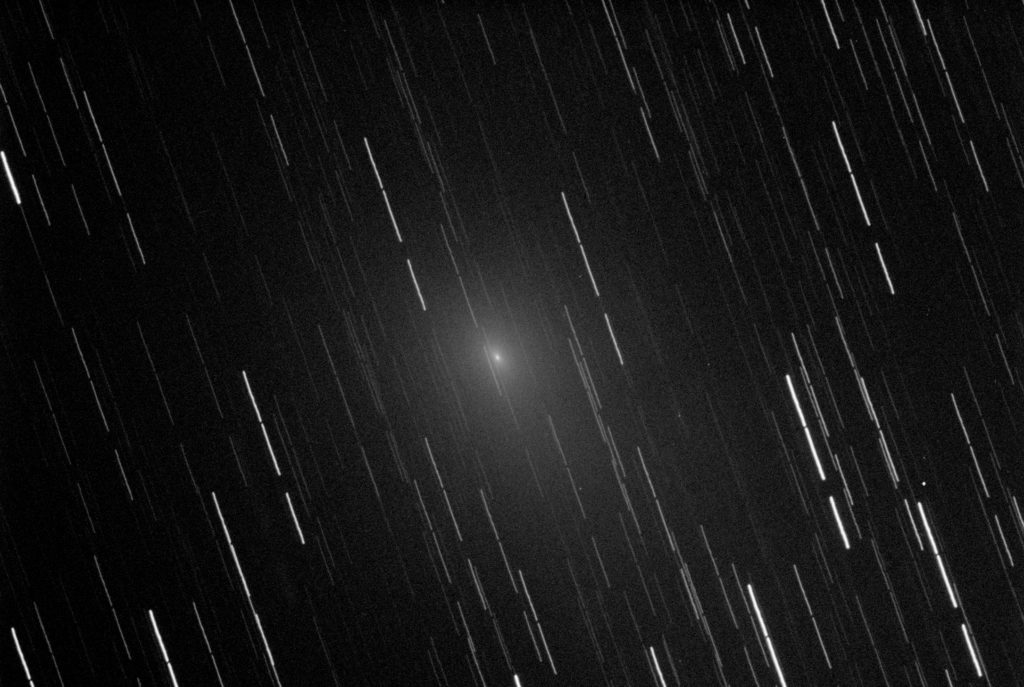Comet 45P’s motion over one day brought it above my treeline about an hour earlier than Thursday night. Unfortunately, the Moon’s daily motion brought it higher in the sky and closer to the comet. These combined to lessen the amount of time I could image the comet.
Thursday night the mount was tracking at the sidereal rate. This is the rate the Earth rotates using the stars as the reference. This is why the stars are round after a timed exposure.
An object’s orbit in the solar system can be accurately modeled by 6 numerical values known as orbital elements. Once enough observations of a solar system object are taken, those 6 values can be derived. The Minor Planet Center (MPC) publishes the orbital elements once they are calculated. In this case we are discussing comet 45P and depending on where the comet is in its orbit, the gravitational effects of other objects (say Jupiter or the Earth) can change its orbit and, as a result, the calculated orbital elements. These values can change fairly quickly. My first pointing attempt Friday night left me with an empty image of stars. With the comet nearing the Earth, the orbital elements from Thursday night were no longer accurate and I had to download Friday’s values.
By using the orbital elements published Friday I was able to change the rate and direction the mount moved to match the orbit of the comet. But since the mount is now matching the comet’s movement and not the Earth’s rotation, the stars get streaked. This is why the comet looks natural even though the exposures were 300 seconds long. The image is a stack of three 300 second images.
